The English gave us their language and 800 years of foreign rule and we obliged them by sharing our Christianity. St Colmcille on his lonely boat from Donegal – banished in the 6th century for illegally copying a manuscript – founded a monastery on the isle of Iona and converted the locals.
One of his monks, another man of Irish descent – possibly from the west like myself and Colmcille – was Aidan, who became Bishop of Northumbria in 635 and set up a priory on the island of Lindisfarne, off the northeast coast of England. It was one of the most important centres of early Christianity in Anglo-Saxon England, and is still a place of pilgrimage today.
Researching a series of books on British cathedrals, I got to know Lindisfarne, aka Holy Island. It’s referenced in most of the histories of Britain’s great medieval cathedrals and after spending nine months visiting 30 cathedrals, admiring Gothic arches and climbing into bell towers on crutches, I decided I’d go there.
I was on crutches. My right hip had finally worn out due to early onset arthritis, somewhere between signing the book contract and starting my cathedral tour. It wasn’t a great year.
READ MORE
A pilgrimage, says the dictionary, is “any long journey, especially one taken as a quest”. My quest to Lindisfarne was less about honouring religion, more about finding some peace. I set off in November – in hindsight not the ideal time to be travelling to a northerly island, which is accessible by road for only a few hours every day when the tide is out, 350 miles from London where I was living. But it seemed to be a straightforward journey, 3½ hours on the train to Berwick-on-Tweed and all afternoon to make the 20-minute crossing to the island before the tide came in. Armed with the crutches and a small backpack, I headed off one Friday morning.
I realised I was in trouble after I’d sat for 1½ hours looking at a tree outside Doncaster. The train driver gave us regular updates about the “missile birds” that had dive-bombed the train, and engineers were on their way. Eventually we were moving again, only now we were going backwards and so almost two hours after we’d passed it, I was back in Doncaster.
Next I was heading for Newcastle, with a connection for Berwick that just might let me make the tide. But another delay scuppered that, and I arrived in Berwick five hours later than expected with a three-hour wait for the tide to go back out. Finally, 15 hours after I’d started my journey, I crossed the causeway to Lindisfarne in pitch darkness, deafening the taxi driver with loud cheers of delight as we crossed the seabed – though in fairness we could have been crossing a field of potatoes for all I could see of it.
It’s a weird thing arriving in a new place in darkness. I had confused impressions of long lonely roads, small clusters of brightly lit houses and the thunder of waves in the distance.
I was up the next morning as the sun rose, hobbling to the window of my small single room – you could have called it monk-like – to look out. It was beautiful, the sky, glowing pink and orange, lit up the beach and the hulking 16th century Lindisfarne Castle on the highest point of the island.
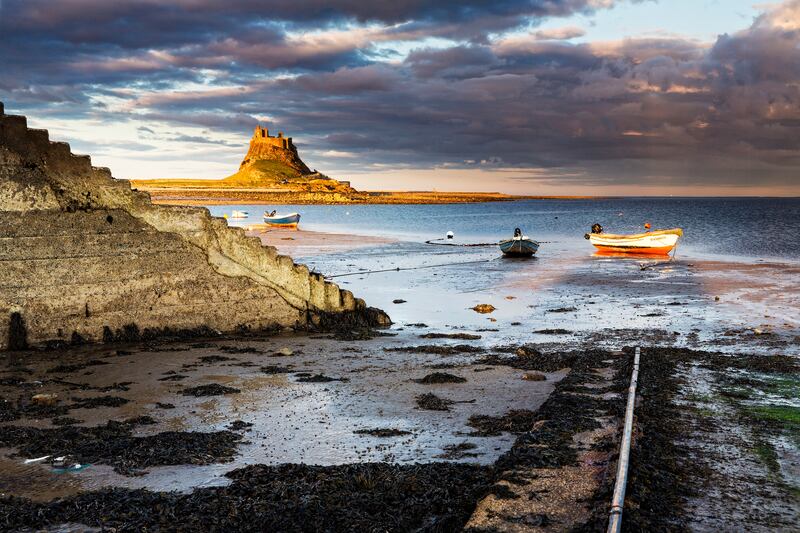
From a disastrous start, the sun shone on me all weekend. November? It might as well have been mid-July as I climbed sand dunes for glorious sea views and picked my way across rocky beaches in dazzling sunshine, my muscles limbered up by months of climbing into bell towers.
Fewer than 200 people live on Lindisfarne and there aren’t a lot of holidaymakers in winter – but there are an awful lot of birds. As nature everywhere else settles down quietly for the season, the island is teeming with life and activity. A third of the world’s population of light-bellied brent geese come from the Arctic, Greenland, Russia and Spitzbergen, to spend their winters here, joined by pink-footed and greylag geese, wigeons, plovers and godwits. Three hundred bird species visit the island during the year, a stone hut near the harbour has all the details on “wild Lindisfarne”.
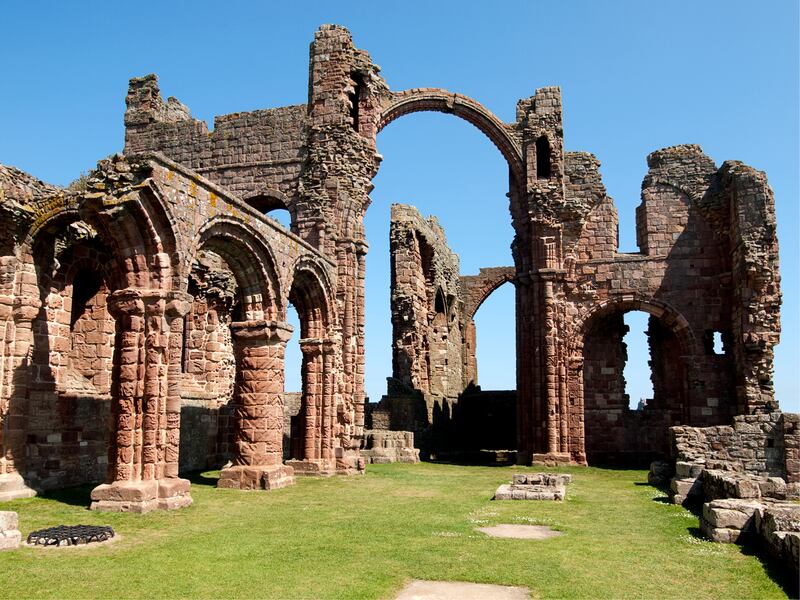
I picked up local information from the Lindisfarne Centre, visited all the craft shops, including the lovely Lindisfarne Scriptorium with its illuminated prints and fabrics, and browsed in the post office, which sells postcards and souvenirs alongside stamps and groceries. For a small island, Lindisfarne has plenty of coffee shops – there’s even one in that post office – and the Lindisfarne Hotel has a cake terrace. For lunch and dinner, I headed to The Ship and the Crown & Anchor.
I stayed at the Open Gate, a guesthouse and retreat centre dating from the mid-1500s and, reportedly, the island’s oldest continually inhabited house. I ate breakfast at the shared kitchen table every morning, and swapping stories with the other guests was a great start to the day. One of the women I met was there for a craft weekend, and I went to see her work in the local church hall. It’s the sort of place where it’s easy to strike up friendships.
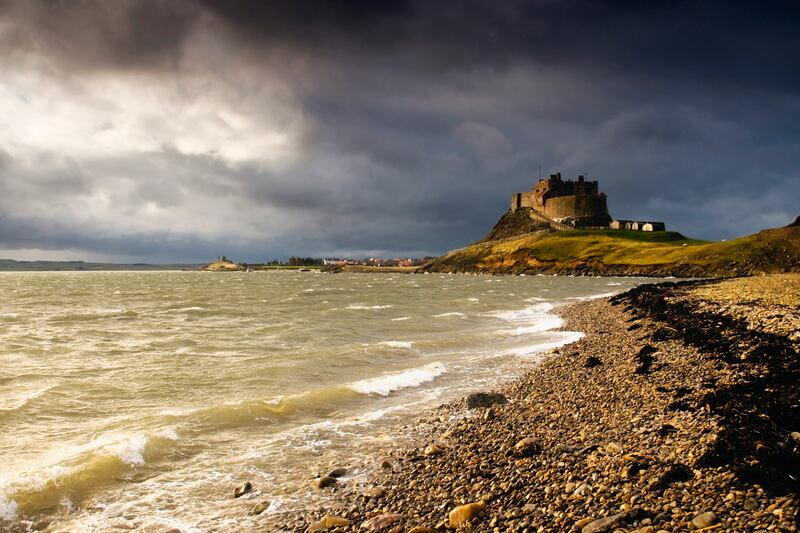
The guesthouse is believed to be built with some of the stones from the ruined Lindisfarne Priory, and later that afternoon I visited it. Looking out to sea on the southerly tip of the island, it’s a stunning location – I could see why Aidan chose it. Though he was probably more concerned with spotting the arrival of pillaging Vikings than the views.
In the 9th century, the constant Viking attacks drove the monks away and they left, carrying the remains of St Cuthbert, Lindisfarne’s most famous prior. They made their way to the north of England where they set Cuthbert down – apparently, he was getting too heavy – and finding they couldn’t lift the body again, set up a shrine to him on the spot, which eventually became Durham Cathedral. The Durham monks later re-established the priory on Lindisfarne, where it lasted until Henry VIII’s 16th century Reformation, and it’s said they brought Cuthbert back with him. He is reportedly now buried under my guesthouse.
On my last day, I walked the Pilgrim’s Way from the mainland to the island, three miles across the seabed marked with tall poles and the only means of access for islanders, visitors, monks, pilgrims and saints until the 1950s when the road was built. It wasn’t an easy walk through sludgy sands and the crutches weren’t helping, but the sun was bright, the wind was fresh and the views were stunning.
If I had lived my whole life just to come here, it was worth it. I put nine-hour train journeys out of my head and gave myself up to nature. I could feel the island’s healing power every step of the way, even when the water covered the top of my hiking boots and I was sinking gracelessly into slime, even when the sun fell lower in the sky and the wind started to rise around me.
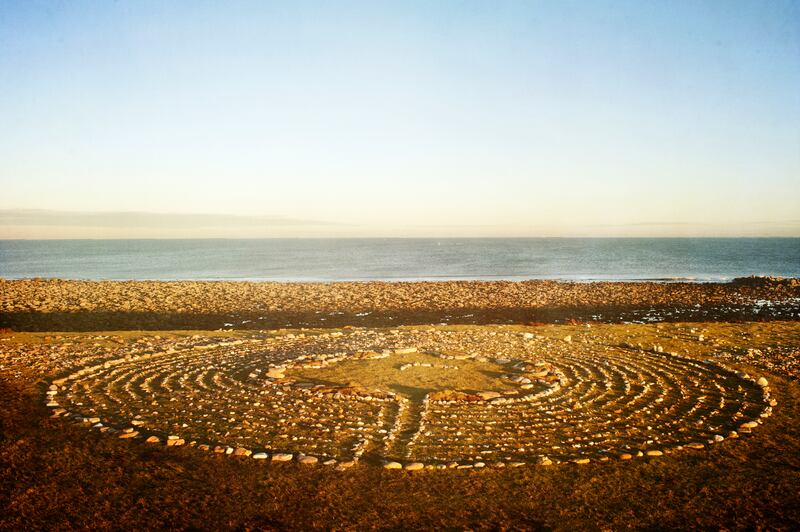
There is a great sense of spirituality here, in every rock and tree, every passing plaintive-calling bird, and a great sense of history rolling across the centuries. It’s a meeting place of people and cultures, beliefs and hopes, of the Irish and the English, the land and the sea, the past and the present. This is a place of joy, not penance.
I sat on a packed train back to London, so many people wedged into the small space between the carriages that I was held hostage and thirsty for the entire journey – there was no way I was getting through that lot on crutches and the tea trolley lady didn’t even try.
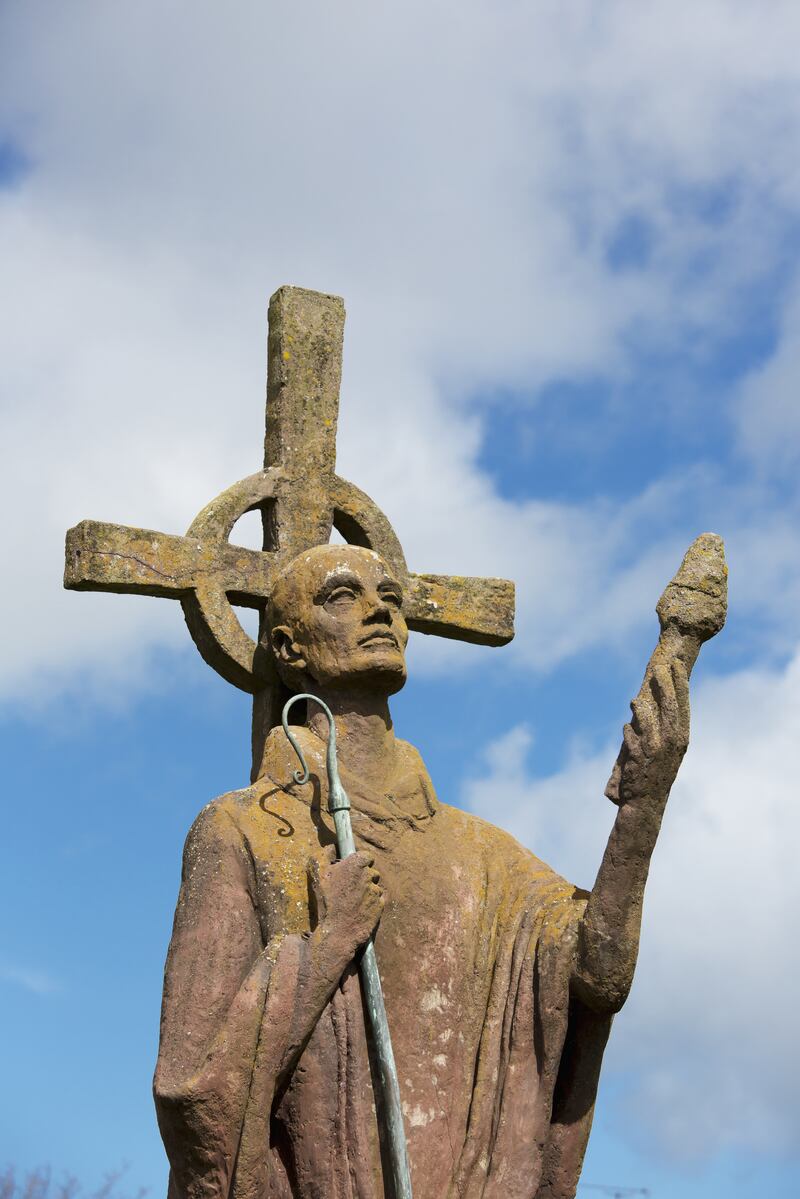
But I was calm and serene after my trip, blessed with the patience of a pilgrim, no longer sweating the small stuff. And blessed also with the seat in first-class I persuaded the train company to give me after Friday’s debacle. This pilgrim had cast off her hair shirt.












